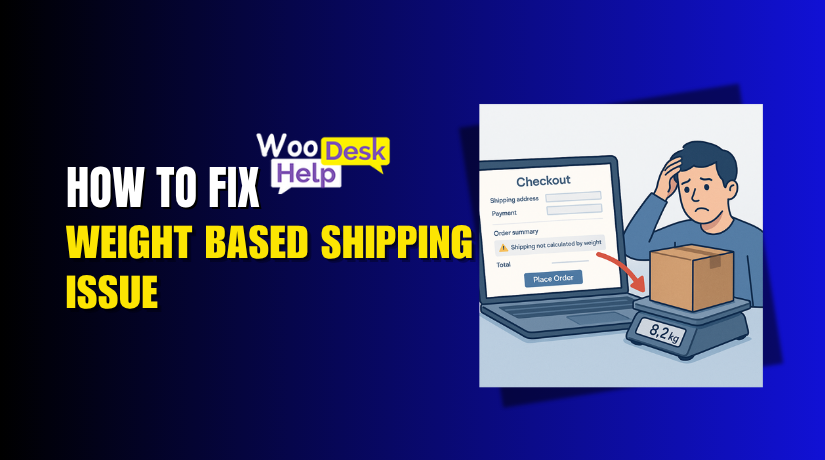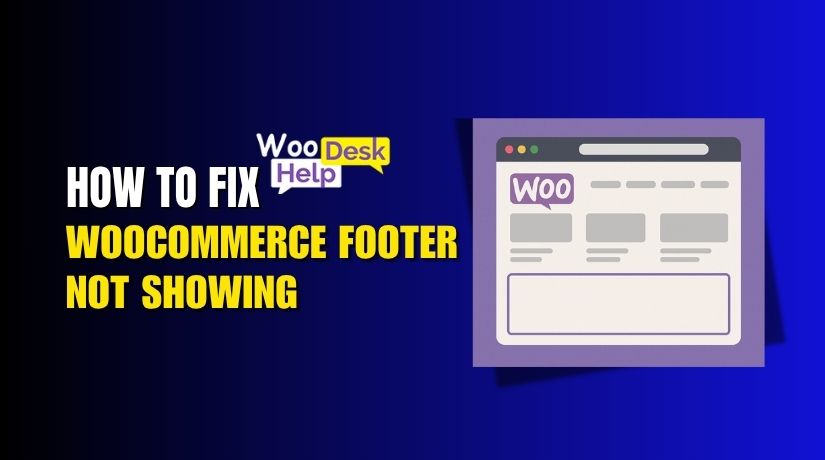
WooCommerce Product Categories Not Showing on Shop Page? Here’s How to Fix It Fast
Table of Contents
- Introduction
- Why Product Categories Matter in WooCommerce
- Common Reasons Why WooCommerce Categories Don’t Show
- How to Fix Missing WooCommerce Categories on Shop Page
- Recommended WooCommerce Plugins to Manage Category Display
- How to Prevent WooCommerce Category Visibility Issues
- Conclusion
Introduction
WooCommerce is a powerful tool for building online stores. Thousands of businesses globally rely on it. However, there are times when things don’t go as anticipated. A frequent issue for shopkeepers is that categories do not appear on the shop page.
You may find that your product categories are missing. Or maybe some categories appear while others don’t. This can be frustrating, especially if your store is live. It can confuse your customers and affect your sales.
You are not the only one dealing with this. This issue is reported by many WooCommerce users. The good news is that this issue can be resolved. And in numerous instances, it is simpler than you believe.
This guide is designed for everyone, whether you’re a newcomer to WooCommerce or have experience using it. No need for coding skills or advanced tools. Just follow along, and we’ll help you solve the problem.
Why Product Categories Matter in WooCommerce
Product categories are more than just labels. They assist you in organizing your store. They simplify the process of locating necessary items for your customers. They also help search engines better understand the structure of your store.
When product categories are visible:
- Customers can browse quickly.
- Products are grouped for easier navigation.
- Your store looks clean and professional.
But when categories are missing:
- The shop page looks empty or cluttered.
- Users may leave your site in frustration.
- You risk losing sales and SEO rankings.
Search engines also use categories to understand your store’s structure. Missing categories can confuse them. This can reduce your visibility in search results.
Here are a few reasons why showing categories is so important:
- Improves user experience: Makes shopping simple and clear.
- Boosts SEO: Helps Google crawl and index your site better.
- Increases conversions: Guides customers to the right products fast.
If you don’t fix this issue, your store may suffer. Visitors may leave before buying. It’s possible that you’ll invest several hours into trying to identify the mistake.
Don’t worry — in the next sections, we’ll explain exactly how to fix the problem. Additionally, you will discover ways to avert its recurrence.

Common Reasons Why WooCommerce Categories Don’t Show
If your WooCommerce product categories are missing, don’t panic. This is typically due to something straightforward. Let’s examine the most frequent causes of this issue.
- Products Are Not Assigned to Categories
This is the most common issue. If a category has no products, it won’t appear on the shop page by default. WooCommerce hides empty categories to keep things clean.
How to check:
- Go to Products in your dashboard.
- When editing a product, scroll down to the Product Categories box.
- Ensure that at least one category is chosen.
Even if the category exists, it won’t show unless it has products.
- Theme Does Not Support Category Display
Some WooCommerce themes do not show categories by default. They are designed to show only products.
To test this:
- Temporarily switch to the Storefront theme.
- Visit your shop page again.
If categories appear now, the issue is with your theme.
- Empty Categories Hidden by Default
WooCommerce hides empty categories by default to improve the customer experience. But sometimes, you want those empty categories to still show — especially if you’re setting up your store.
You can change this setting easily.
- Shop Page Is Not Properly Set
If WooCommerce doesn’t know which page is your “shop,” it can’t display categories.
How to check:
- Go to WooCommerce → Settings → Products → Display
- Look under Shop page — ensure that the correct page is chosen.
An unassigned or incorrect shop page causes display problems.
- Widget or Shortcode Misuse
Widgets and shortcodes control what content appears on a page. If your homepage uses them, and something’s wrong, categories may not show.
Make sure you’re using the correct shortcode:
[product_categories number=”0″]
Widgets should also be placed in the right sidebar or page block.
- Plugin Conflicts or Custom Code
Some plugins interfere with category display. Custom code snippets can also break how your store shows categories.
To test for plugin issues:
- Turn off all plugins except for WooCommerce.
- Take a look at the shop page.
- To identify the issue, reactivate the plugins individually.
If categories reappear after disabling a plugin, you’ve found the issue.
How to Fix Missing WooCommerce Categories on Shop Page
Now that you’ve identified the cause, let’s move on to the solution. The method of fixing the issue depends on its cause, and there are various ways to address it. Proceed step by step as instructed until your categories display correctly.
- Assign Products to Categories
The most common reason categories don’t appear is because they’re empty. WooCommerce hides empty categories by default. That means if you haven’t assigned any products, the category won’t show.
How to fix it:
- Go to Products → All Products in your WordPress dashboard.
- Modify each product and review the Product Categories section.
- Assign each product to the right category.
- Click Update.
Make sure each category you want to display has at least one product.
✅ Tip: You can bulk-edit products to assign categories faster.
- Enable Display of Empty Categories
Sometimes, you want to show categories even if they’re empty. It is helpful for establishing a new shop or exhibiting seasonal products.
Here’s how to enable empty categories:
- Go to Appearance → Customize.
- Click WooCommerce → Product Catalog.
- Find the setting called “Show categories” or “Show empty categories”.
- Turn it on and publish the changes.
This tells WooCommerce to display all categories, even those without products.
- Check and Correct Shop Page Settings
If WooCommerce is not showing categories, it might not know which page to use as your shop.
To fix this:
- Go to WooCommerce → Settings → Products.
- Under the General tab, look for the Shop Page dropdown.
- Ensure the accurate page is chosen.
- Save your changes.
Your shop page must be linked correctly, or categories won’t load.
- Check Theme Compatibility
Some themes don’t support category display by default. Others may require custom settings or templates.
To test your theme:
- Go to Appearance → Themes.
- Activate the default Storefront theme.
- Visit your shop page again.
If the categories show up now, your theme is the issue. You may need to:
- Review your theme’s documentation for specific display settings.
- Contact the theme developer for support.
- Use a child theme to customize the layout.
✅ Tip: Always test modifications in a staging environment prior.
- Use Widgets and Shortcodes Properly
Widgets and shortcodes help you display categories on custom pages or sidebars. If used incorrectly, they may not work as expected.
Using widgets:
- Go to Appearance → Widgets.
- Drag the Product Categories widget to your sidebar or footer.
- Customize settings to show or hide empty categories.
Using shortcodes: Add this shortcode to any page:
[product_categories number=”0″]
This will show all categories, regardless of how many products are in them.
- Clear Cache and Troubleshoot Plugin Conflicts
Sometimes, category display issues come from caching or plugin conflicts. Outdated or poorly-coded plugins can override default WooCommerce behavior.
Step-by-step process:
- Clear your site cache if you use caching plugins.
- Clear your browser’s cache or try accessing the site in incognito mode.
- Go to Plugins → Installed Plugins.
- Turn off all plugins except for WooCommerce.
- Visit the shop page and check if categories appear.
- To locate the conflict, reactivate the plugins individually.
Also, make sure WooCommerce is updated to the latest version. Outdated versions may cause bugs.
✅ Additional tip:
Regenerate WooCommerce’s product tables under WooCommerce → Status → Tools
Click “Regenerate Product Lookup Tables” and wait for it to complete.
These steps cover almost every reason why WooCommerce product categories may not show. By following each fix in order, you’re almost guaranteed to solve the issue.
If none of the fixes work, it could be a deeper theme or plugin conflict. In that case, contacting a WooCommerce expert may be your best next step.
Recommended WooCommerce Plugins to Manage Category Display
- WooCommerce Show Empty Categories
This plugin allows you to easily display empty categories on the shop or category pages without custom code. It’s perfect if you want users to see all categories, even if some don’t have products yet. - WooCommerce Product Categories Designs
Offers multiple layouts (grid, slider, masonry) to display product categories beautifully on any page using shortcodes. Perfect for shopkeepers who desire greater influence over the appearance of categories. - Category Visibility for WooCommerce
Lets you control the visibility of categories for different user roles (e.g., guest, logged-in users). Useful if categories seem to disappear due to access settings. - WooCommerce Customizer
Adds simple options to your WordPress dashboard to customize WooCommerce settings — like showing or hiding empty categories — without writing PHP code. - Product Catalog Mode for WooCommerce
Allows you to toggle between shop and catalog views, manage product visibility, and adjust how categories and products appear. Great if you need more flexibility in catalog layout. - Elementor + WooCommerce Add-ons
If you use Elementor, there are WooCommerce-specific widgets that let you drag and drop category sections, control visibility, and adjust layout easily — no coding needed.
How to Prevent WooCommerce Category Visibility Issues
Once your categories are showing again, it’s important to keep them that way. These problems occur frequently, yet a few straightforward practices can often prevent them.
Here are some tips to help prevent category display problems in the future:
- Always Assign Products to Categories
When you add a new product, always place it in a category. Empty categories are hidden by default, so make sure each category has at least one product.
- Enable Empty Categories When Needed
If you plan to use placeholder or seasonal categories, turn on the “Show Empty Categories” setting. This ensures that even empty categories remain visible on the shop page.
- Check Shop Page Settings After Theme or Plugin Changes
After changing themes or adding plugins, double-check your WooCommerce settings. Sometimes these changes reset your shop page or override the layout.
- Use a Staging Site for Testing
Never test major changes on your live store. Use a staging site to preview new themes, plugins, or layout changes. This helps avoid display problems that can confuse customers.
- Update WooCommerce and Plugins Regularly
Outdated plugins or WooCommerce versions can cause bugs or conflicts. Keep everything updated to the latest versions for best performance and security.
- Avoid Conflicts With Lightweight Plugins
Some plugins conflict with WooCommerce category logic. Use lightweight, WooCommerce-compatible plugins, and avoid those that change product catalog features.
These easy steps can help you avoid this issue in the future.
Conclusion
Your product categories are the backbone of your store’s navigation. When they go missing, it can cause confusion and lost sales. Fortunately, this problem is typically simple to resolve.
By following the steps outlined in this article, your categories should be restored and functioning smoothly
Still stuck? Don’t worry. The team at WooHelpDesk.com is here to help. Reach out for expert WooCommerce support and personalized solutions.




